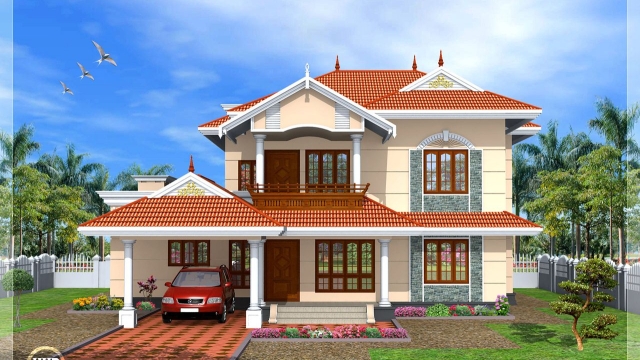
From Seed to Serenity: Transforming Your Home with Garden-Inspired Design
Are you longing for a serene and inviting atmosphere in your home, a space that radiates tranquility and natural beauty? Look no further, as we delve into the world of garden-inspired design, where home and garden seamlessly blend together to create a harmonious oasis. The concept of bringing the outdoors in has become a popular trend in home design, and with good reason. By incorporating elements of gardening into your living spaces, you can transform your house into a peaceful sanctuary that nurtures both your body and soul. With the art of companion planting and clever design strategies, your home will flourish with sophistication and charm, all while providing a haven of relaxation and rejuvenation. Welcome to housegardenhome.com, a virtual collection of inspiring house, garden, and home projects that will guide you on this enchanting journey of botanical design mastery. Let’s explore how you can elevate your home to new heights of natural elegance, where the boundaries between indoors and outdoors dissolve into pure serenity.
Creating a Garden-Inspired Atmosphere
When it comes to home design, there is something undeniably captivating about bringing the beauty of nature indoors. With a garden-inspired atmosphere, your home can truly become a sanctuary of serenity. By incorporating elements of gardening into your interior design, you can create a space that exudes freshness, tranquility, and a delightful connection to the natural world.
One way to infuse a touch of the garden into your home is through the use of natural materials. Opt for furniture and decor pieces that showcase the raw beauty of wood, bamboo, or rattan. These organic materials not only add warmth and texture to your space but also embody the essence of nature, making your home feel like an extension of an outdoor oasis.
Another key aspect of creating a garden-inspired atmosphere is to embrace the power of greenery. Introduce a variety of houseplants, both large and small, to breathe life into your living spaces. Not only do indoor plants purify the air and improve overall well-being, but they also infuse your home with a sense of vitality and freshness. Consider displaying vibrant flowers, lush ferns, and cascading vines to add visual interest and create a serene ambiance.
In addition to incorporating plants, using botanical prints and patterns can further enhance the garden-inspired feel of your space. Consider incorporating leafy motifs or floral designs into your upholstery, curtains, or wallpaper. These nature-inspired patterns instantly bring a sense of the outdoors inside, creating a serene and inviting atmosphere.
By following these simple guidelines, you can transform your home into a garden-inspired haven of tranquility and beauty. The melding of home design and gardening allows you to fully immerse yourself in nature’s wonders while enjoying the comforts of your own space. So go ahead, unleash your creativity, and let the essence of the garden flourish within the walls of your home.
Remember, for more home design and gardening ideas, be sure to visit housegardenhome.com, a curated collection of inspiring projects and tips to help you create the perfect home and garden oasis.
Incorporating Plants into Your Home Design
Whether you have a green thumb or simply appreciate the beauty of nature, incorporating plants into your home design can breathe new life into your space. Not only do plants add a touch of tranquility, but they also bring a sense of freshness and vitality to any indoor environment.
Companion Planting
One of the key ways to integrate plants into your home design is by using them as natural decor elements. Instead of traditional artwork or decorative pieces, consider placing potted plants strategically around your living space. Choose plants with visually appealing foliage or vibrant blooms to create focal points that instantly catch the eye. From the elegant simplicity of a potted succulent on a bookshelf to a cascading ivy plant adorning a wall-mounted planter, the possibilities are endless.
In addition to their aesthetic appeal, plants can also serve a practical purpose in your home design through companion planting. This gardening technique involves selecting plant combinations that benefit each other when grown in close proximity. For example, pairing herbs like basil and parsley with tomatoes not only enhances their flavors but also helps control pests naturally. By incorporating companion planting principles into your indoor garden, you can create a harmonious and functional ecosystem right in your own home.
With the increasing popularity of indoor gardening, services like housegardenhome.com have become invaluable resources for homeowners seeking inspiration and guidance. This online platform offers a collection of house, garden, and home projects that cater specifically to those interested in incorporating plants into their living spaces. From DIY terrariums to vertical herb gardens, the website provides a wealth of ideas and practical tips to transform your home into a lush sanctuary.
By embracing the concept of bringing the outdoors in, you can create a home design that fosters serenity and connection with nature. Whether you choose to display a single statement plant or cultivate an entire indoor jungle, the presence of greenery will undoubtedly transform your living space into a haven of tranquility.
Enhancing Harmony with Companion Planting
Companion planting is an ancient gardening technique that involves planting different species of plants close together to promote mutual benefits. By strategically choosing plants that complement each other, you can create a harmonious garden that not only looks visually appealing but also has numerous practical advantages.
One of the main advantages of companion planting is its ability to naturally control pests. For example, interplanting marigolds with vegetables acts as a natural insect repellent. Marigolds emit a strong scent that deters many pests, including nematodes and aphids. Similarly, planting aromatic herbs like basil, thyme, or rosemary alongside your fruits and vegetables can help discourage harmful insects and attract beneficial ones, such as bees and ladybugs.
Companion planting also improves soil fertility and nutrient uptake. Certain plant combinations can enhance each other’s growth by providing a more favorable environment. For instance, leguminous plants like peas or beans have nitrogen-fixing capabilities, which means they convert atmospheric nitrogen into a usable form for plants. When planted alongside nitrogen-loving plants like tomatoes or lettuce, they help supply nitrogen to the surrounding soil, promoting stronger and healthier growth.
By incorporating companion planting techniques into your garden, you can create a vibrant and well-balanced ecosystem that fosters healthy plant growth and reduces the need for chemical fertilizers and pesticides. The symbiotic relationships formed between different plant species not only promote plant health but also contribute to an aesthetically pleasing and diverse garden that will be a joy to behold.
Remember, for more inspiring house, garden, and home projects and ideas, visit housegardenhome.com. Happy gardening!




